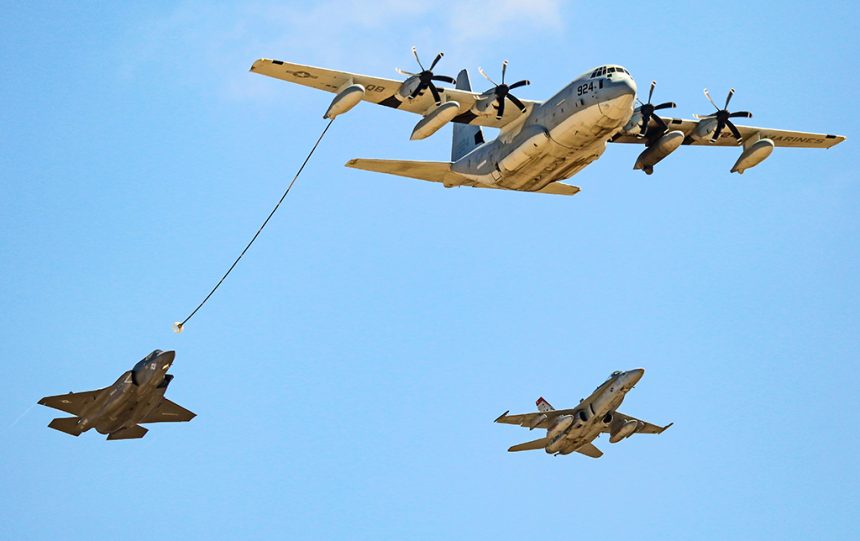We Talk to Retired U.S. Marine Corps Pilot John Trotti About Midair Refueling.
“I’m not sure I’d characterize Air-to-Air refueling (AAR) itself as risky. Rather, I always thought of it as requiring strict attention to the slight but significant changes taking place as you approach, engage, and then maintain position on the drogue.”
That’s what former USMC F-4 Phantom II pilot, combat veteran, author and Stanford graduate John Trotti told TheAviationist.com about midair refueling using the drogue and probe system employed by U.S. Marine Aircraft. Trotti’s remarks, both as a former USMC fighter pilot and perhaps more significantly even, as a subject matter expert and published author, are relevant to the discussion of this week’s loss of a USMC F-35B over the Coachella Valley in California.
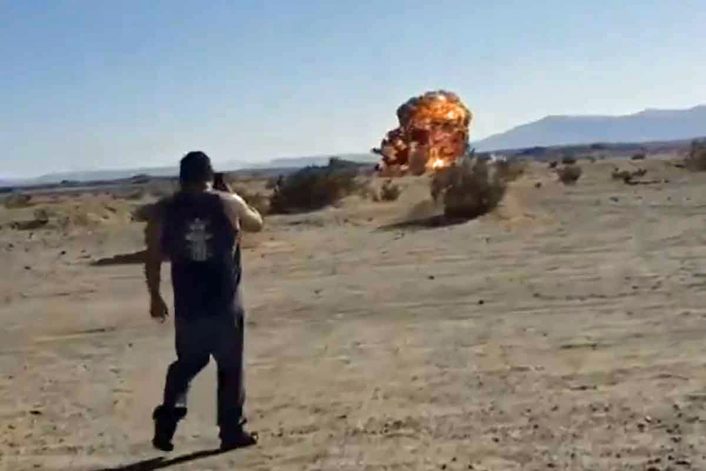
The Sept. 29, 2020 accident, in which the F-35B crashed after its pilot ejected and a KC-130J belonging to the VMGR-352 “Raiders” based at MCAS Miramar was damaged during an emergency landing, was caught on video (the F-35B impact) and ATC radio traffic was recorded. The KC-130J had a crew of eight. Video of the aircraft after its emergency landing showed both of its right/starboard side propellers missing.
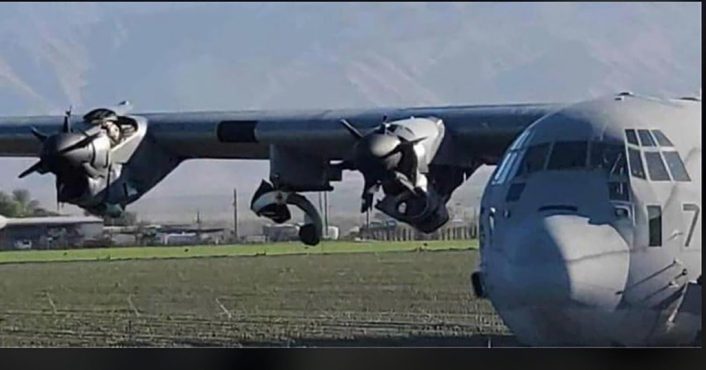
The U.S. Marine KC-130J Hercules tanker aircraft uses a towed hose and drogue refueling system also employed by the U.S. Navy and several foreign air forces, including Russia. This midair refueling configuration contrasts with the rigid flying boom and receptacle system used by U.S. Air Force aircraft and many other nations for AAR.
John Trotti told TheAviationist.com that, “For starters, not all drogues are the same. Even slight differences in conformation–deformations perhaps–can change how a drogue will ‘fly’ in the free airstream and react as the receiver aircraft approaches. Typically, the drogue will sense you coming, requiring you to anticipate its actions and apply small corrections during the final stage. Once hooked up, there is a temptation to consider the hard part complete, when in fact maintaining the proper position can be challenging.”
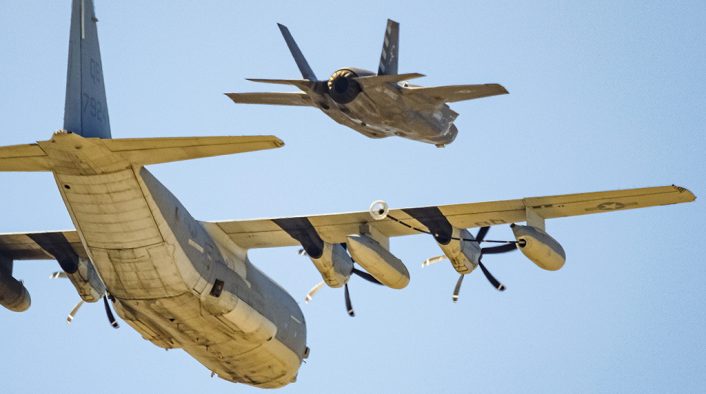
This reporter has flown inside the refueling control station and the cockpit of USAF KC-10 Extender tanker aircraft while refueling F-35A Lightning IIs, and been refueled in midair using the Air Force boom and receptacle system. The Air Force system, with its rigid refueling boom, is used by the KC-135 and the KC-10, as well as the Air Force’s new KC-46. The system was stable and precise in daytime conditions in fair weather. But the margin of error between a successful midair refueling and an accident are relatively close given the proximity of the aircraft during refueling. A sudden change in altitude of just 20-feet could produce a collision even with the rigid, telescoping refueling boom on Air Force tankers.
“The standard KC-130 refueling speed (at least in my day with the Phantom) was around 210 KIAS at an altitude of roughly 20 thousand feet. As you took on fuel (1) your center of gravity was changing as different tanks were filled, and (2) depending on your aircraft’s gross weight, lading, and stability index, you were encountering aerodynamic changes. For instance, with a heavily laden Phantom it was not unusual to find yourself going in and out of minimum afterburner to stay on the drogue.”
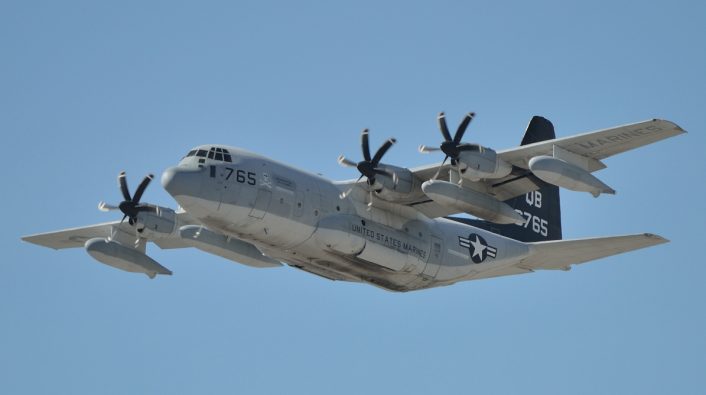
John Trotti went on to tell TheAviationist.com that, “The real risks were not in the air refueling itself, but in the rendezvous maneuvers, often conducted in a turn to speed up the process rather than engaging in an extended tail chase.”
The complex intercept between receiving aircraft and tanker were detailed by Trotti when he told us that, “In a turning rendezvous, the receiver aircraft typically approaches on a 30 to 45 degree bearing to the tanker creating a significant overtake velocity even with both aircraft at the same KIAS (Knots Indicated Air Speed). As a result, as he (or she) nears the tanker, the pilot of the receiver aircraft has to perform a conversion maneuver to arrive at a position behind the tanker on the same heading and at the same airspeed. The later in the maneuver the receiver begins the conversion, the ‘hairier’ it becomes, sometimes leading to an overshoot and lengthy comeback. Normally the result of this in a free-of-the-clouds daytime situation is embarrassment on the part of the receiver, but it can also become dangerous, particularly when other factors such as the position of the sun might obscure the position of the tanker. There, a high angle-off last-ditch effort to complete the conversion maneuver can–and has–ended in disaster.”
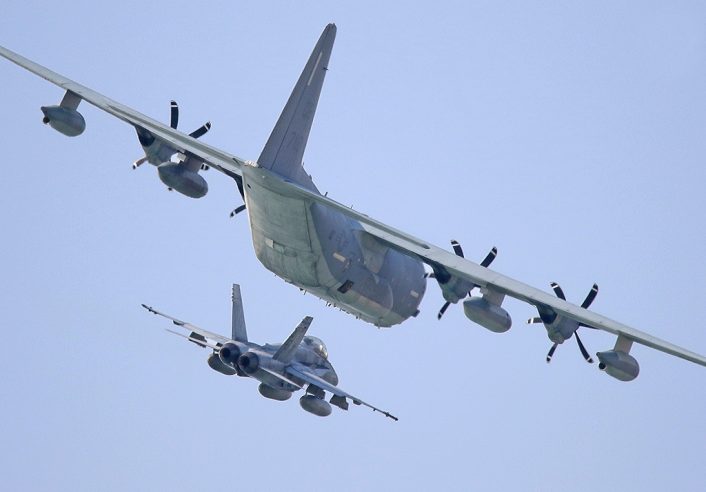
Trotti qualified his remarks in comparing his experience in the F-4 Phantom II to the F-35B by telling TheAviationist.com, “I don’t know that any of this helps, and I sure as hell don’t know what the performance margin for an F/A-35B is at 210 knots and 20k feet but it might be a factor. As for a running rendezvous collision, I don’t see it unless the pilot has fallen asleep.”
Finally, when we asked John Trotti to compare and contrast the USAF rigid, steerable, telescoping refueling probe to a flexible hose drogue system used on USMC tankers like the KC-130J, he outlined four key points he felt are true:
“It’s only an opinion, but while I think the Air Force system is best for their strategic aircraft (don’t let anyone hear my saying ‘lumbering’ please), I truly believe the Navy drogue and probe system is better. Why?
- The receiver is the one with the raw nerve
- Given that rendezvous is the same with either system. The time to plug in and start receiving fuel has to be considerably faster. I can’t prove it but I risk my nickel on it.
- There is less chance of damaging the receiving aircraft. Again, I can’t prove it but it’s my gut feeling.
- In the case of the Marines using KC-130s, a malfunction of one of the drogues is a pain in the tail, but not a total disaster. With the Air Force system, you lose the boom and the receiver could be in deep trouble.
The truth may lie in the feeling of being in control…a male thing, though again I would not like to cast aspersions on our blue-suited friends.”
While it is inappropriate to speculate on the cause of any aviation accident before a formal inquiry is complete, John Trotti’s insights provide at least a starting point for understanding the challenges faced by USMC aircrews midair refueling with the KC-130 tanker and the hose and drogue system. These insights will be helpful as we begin to learn more about this accident.
Thanks to John Trotti, USMC, author of the definitive book on USMC F-4B Phantom II operations in Vietnam, Phantom Over Vietnam from Presidio Press, published in 1996 and available in paperback on Amazon.com

